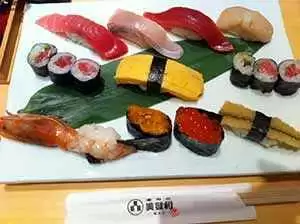
Celiac.com 03/23/2017 - Allergens in processed foods can be a significant problem in the confectionery industry. In the European Union, current estimates suggest that 17 million people suffer from food allergies and in recent years, the number of children under five years with significant food allergies has grown. Therefore, it is important to keep track of information and raise awareness among consumers and producers. It should also be noted that all the tragic events and unpleasant incidents related to food and quality level affect the economy of the entire food industry, not just one company. Managing food allergens is a first step in limiting these problems.
Since the term allergy is often misused it must be distinguished from food intolerance. The consequences related to these two conditions are very different. Intolerance is rarely life-threatening. People with a food intolerance can usually eat small amounts of problematic foods without adversely affecting their health. Food intolerance can be caused by metabolic disorders such as lactose intolerance. People with food allergies may react strongly even to trace amounts of allergenic ingredients (with respect to foods to which they are allergic) present in food. They cannot tolerate even very small amounts of allergens in their diet, with the risk that allergens can cause serious reactions and even death. Below we present fragment of a list of allergens form REGULATION OF THE EUROPEAN PARLIAMENT AND OF THE COUNCIL No. 1169/2011 of 25 October 2011 on the provision of information to consumers about food. For more complete information, please refer to the original text of the regulation.
Celiac.com Sponsor (A12):
List of allergens under REGULATION OF THE EUROPEAN PARLIAMENT AND OF THE COUNCIL (EU) No 1169/2011 of 25 October 2011:
- Cereals containing gluten,
- Crustaceans and products thereof,
- Eggs and products thereof,
- Fish and products thereof,
- Groundnuts (peanuts) and derived products,
- Soybeans and products thereof,
- Milk and products thereof (including lactose)
- Nuts, such as almonds, hazelnuts, walnuts, cashews, pecans, Brazil nuts, pistachios / pistachios, macadamia nuts and Queensland nuts and derivative products
- Celery and products thereof,
- Mustard and products thereof,
- Sesame seeds and products thereof,
- Sulphur dioxide and sulphites
- Lupin and products thereof,
- Mollusks and products thereof.
Confectionery may include many ingredients from this list of allergens. The best way to treat allergies is to avoid the banned products. From the manufacturer's point of view it is important to ensure correct labeling of their own products. It is worth paying attention to this information because allergic customers and their care-givers read this information carefully and require precise administration and declaration of these allergens. Once they trust the brand they are likely to be loyal. Companies should therefore take steps to ensure that the ingredients are carefully and thoroughly listed. A risk factor which is worth noting is unintentional cross-contamination where a minimum amount of an allergen can be transferred during the process of manufacturing a product that is otherwise completely free of allergens. Producers should do everything possible to keep allergenic products and ingredients out of those products for which they are not intended. Cross contamination or inadvertent introduction of allergens into the product is generally the result of exposure of the product during processing or handling. Cross contamination is when there are many kinds of products produced on the same production line, re-processing, or due to ineffective cleaning or preparations containing dust from allergens. Although some phenomena cannot always be prevented, by developing and implementing controls to reduce contact between allergens and other products, consumer safety and trust can be enhanced.
One of the tools to help in the control of allergens is an integrated quality management system which includes an inspection for all allergens. An allergen Management Plan is a key element of efforts to ensure a safe product. This plan is a written document that lists the storage, handling, processing, packaging, and identification of allergenic foods and ingredients. But this is not a one-time effort. An allergen control plan must be implemented, enforced and audited and constantly updated. Every time you make a change in the manufacturing process or a product, you must evaluate your plan and, where necessary, update it. Of course every employee is an important part of the plan, and everyone must understand their role and the responsibilities they bear. Raising awareness among the employees in this area, through training, should also be documented. The plan must also take into account the cooperation with suppliers of raw materials. Not all of the recommendations of the quality control system may be used in any food processing plant. Despite this, consider any threat and determine the extent to which it may affect a business and its suppliers. And have procedures in place for allergen control. The risk assessment should be conducted in order to develop a plan for the control of allergens. The assessment should start with raw materials, their storage, each stage of production, packaging and labeling of the finished product. It should define the critical points where allergens may be introduced into the product and establish a system for monitoring these points to avoid unintentional cross contamination. This plan is part of health care, the acquisition and maintenance of consumer confidence, and also provides financial protection and preserves the manufacturer's reputation.
Product labeling should assist consumers who have allergies or intolerances by providing them with more comprehensive information on the composition of the food they buy. Caution in the labeling of allergens is a voluntary warning to consumers added to the list of ingredients (eg. it may contain milk). When should we use labels informing about the possibility of allergens? In order to warn consumers about trace amounts of allergens we should use them only when it has been found that occasional contamination of the product cannot be avoided. This decision should be based on a thorough evaluation process and allergen control plan, if it is determined that unintentional cross-contamination cannot be eliminated by careful labeling of allergens. Caution in the labeling of products that may contain allergens can never be used as a substitute for good manufacturing practices or an allergen control plan.











Recommended Comments
Create an account or sign in to comment
You need to be a member in order to leave a comment
Create an account
Sign up for a new account in our community. It's easy!
Register a new accountSign in
Already have an account? Sign in here.
Sign In Now